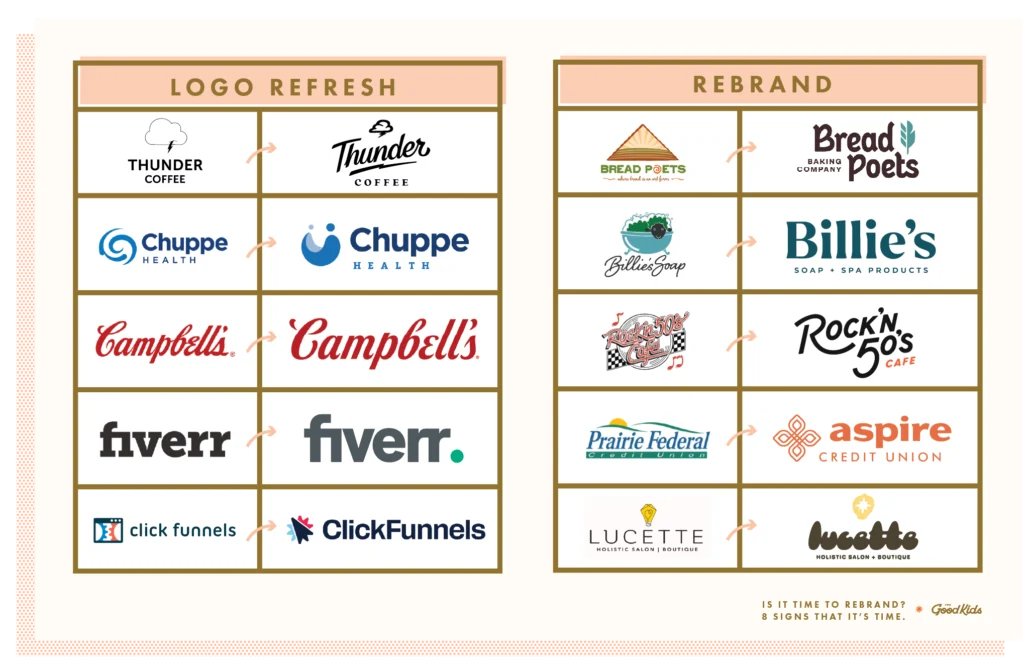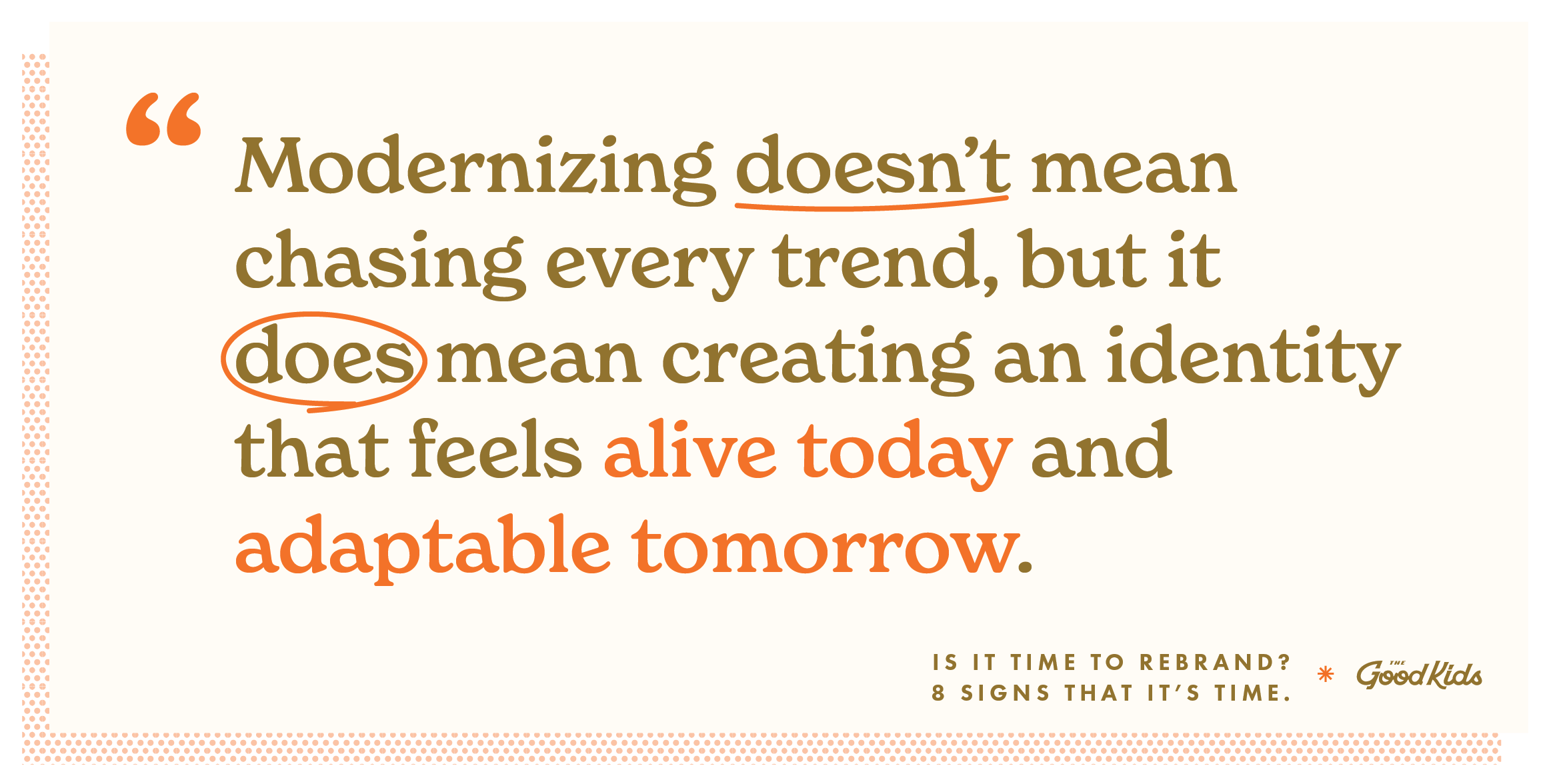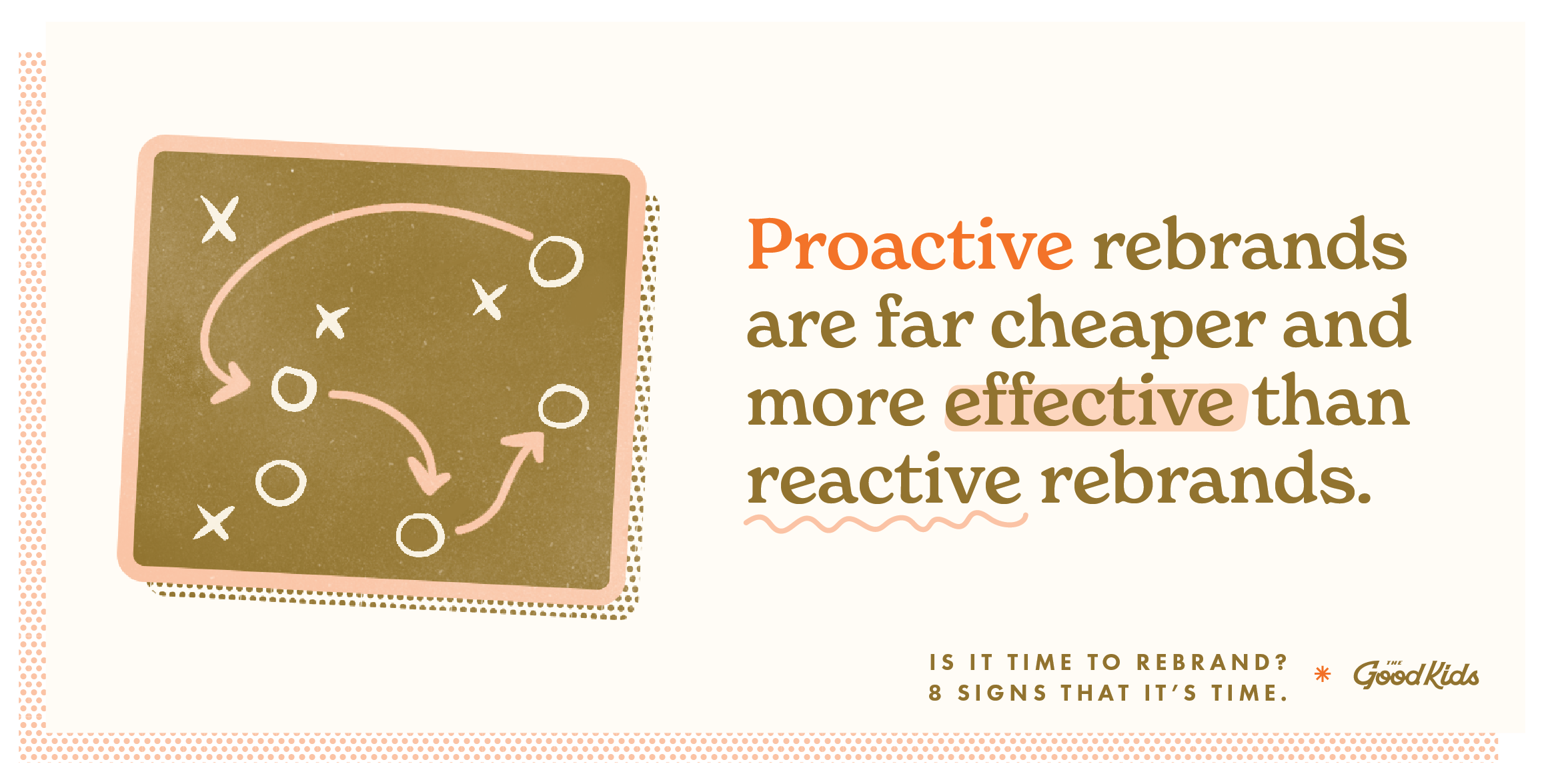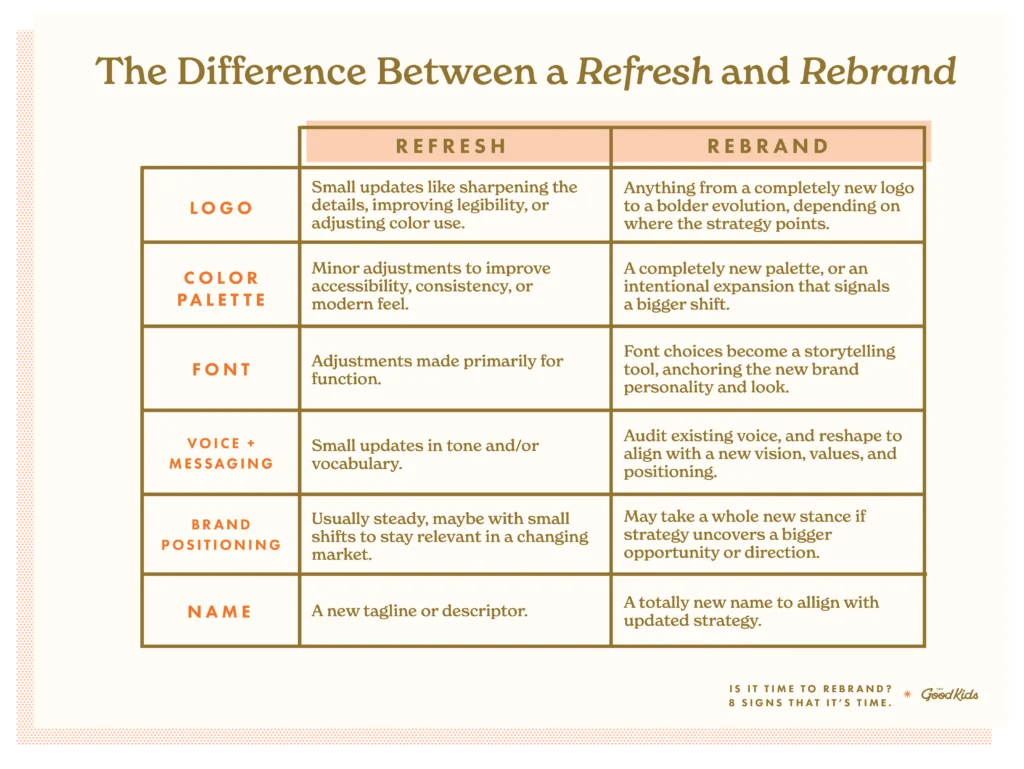

Table of Contents
When Is It Time to Rebrand?
TL;DR
- Rebranding isn’t just for companies in crisis; proactive rebrands keep brands relevant.
- Signs you may need a rebrand include: outdated identity, a mismatch with your audience, major launches, blending into competitors, lack of internal alignment, business growth, unclear positioning, market shifts, the company is remodeling, there’s a new location on the horizon, or leadership is changing.
- A successful rebrand doesn’t mean throwing everything away; it means evolving into something stronger, sharper, and aligned with your future.
What does rebranding mean?
Rebranding means updating or redefining your company’s identity; not only your logo, but also your voice, positioning, and overall customer experience. The goal is to ensure your brand reflects who you are today, and resonates with the audience you want to reach tomorrow.
Unlike a simple design refresh, a full rebrand is strategic: it rethinks how your company shows up in the market, how people perceive it, and why customers should choose you over competitors.

How do you know if your brand is outdated?
If your logo, messaging, or overall aesthetic feels stuck in a past era (and not in a nostalgic, intentional way) it’s time for a change.
Design trends, customer expectations, and technology evolve quickly. A brand that once felt fresh can quickly become stale. Modernizing doesn’t mean chasing every trend, but it does mean creating an identity that feels alive today and adaptable tomorrow.

What should you do if your audience has changed, but your brand hasn’t?
If your ideal audience today isn’t the same as five years ago, it’s time to rebrand.
Ask yourself:
- Are we still speaking the right language?
- Are we showing up in the right channels?
- Or are we trying to win over today’s audience with yesterday’s message?
If the answers feel shaky, your brand is due for a realignment.

Should you rebrand before a big launch?
You should rebrand before a big launch; new products, services, markets, or leadership are all signs that your brand identity should evolve.
Launching something major without aligning your brand is like showing up to a black-tie event in jeans: you’re technically present, but you’re not making the impression you could. A refreshed brand signals growth, confidence, and readiness for the next chapter.

Should you rebrand if your brand looks like everyone else’s?
If you’ve started to blend in with your competitors (visually, verbally, or strategically), it’s time to rebrand.

When customers can’t tell you apart, they won’t remember you. And if you’re not remembered, you’re not chosen. Rebranding can sharpen your positioning and reclaim a space that’s distinctly yours.
What should you do if your internal team isn’t aligned with the brand?
If your team isn’t jiving with the brand, it’s time to rebrand. Your brand isn’t just for customers, it’s for your employees (and future team members) too.
If employees ignore the brand guidelines, feel confused about the company mission, or seem unenthusiastic about the overall brand, that’s a flashing neon sign something isn’t working. A rebrand can reignite pride, bring clarity, and realign everyone around a shared vision.
What should you do if your business has outgrown the original brand?
Congratulations, that’s a great problem to have! If your business has outgrown the original brand, it’s time to rebrand. Many businesses start with a scrappy brand that works in the beginning, but eventually, it feels small compared to the level of clients, talent, and opportunities you’re attracting.
If your outward brand doesn’t match your internal excellence, you’re selling yourself short. A rebrand helps you level up and signal that you’re playing in a bigger league.
(Psst… If you’re embarrassed to send someone to your website or share your business card, it’s past time.)

Should you rebrand if you’re struggling to explain what makes you different?
Quick test:
Can you clearly, quickly, and confidently explain why someone should choose you over your competitors?
If not, it’s probably not a “you” problem, it’s a brand problem. Brands exist to simplify that story. To make your value proposition unmistakable.
If your messaging is all over the place or you’re struggling to articulate your edge, a rebrand can bring much-needed clarity and consistency.
Starting with a strong foundation is key.
Defining your brand’s personality gives every other part of your brand a leg-up. If you want a step-by-step guide to nail it, our webinar, The Personality Factor, walks you through how to define your brand’s personality, with valuable insights related to brand archetypes. Dive in today!

Should you rebrand if you’re experiencing shifts in the market?
If the market is moving faster than you are, it’s time to rebrand.
New competitors, evolving technology, or rising customer expectations can all make your current brand feel outdated. Proactive rebrands are far cheaper and more effective than reactive ones. Waiting too long can leave you scrambling to catch up.

So, Is It Time to Rebrand?
If a few (or a lot) of these signs are feeling a little too familiar, it’s probably not a coincidence. Brands aren’t static! They grow, shift, and evolve just like the businesses they represent.

A rebrand doesn’t mean you have to throw everything away. It’s about building something stronger, sharper, and more aligned with where you’re headed — not just where you’ve been.
And if you want a team that makes the process simple, strategic, and (dare we say) fun, we’d love to help.
Let’s chat about where you’re headed, in a free brand coaching call.
FAQs about rebranding
What’s the difference between a rebrand and a refresh?
A refresh updates surface-level elements (like design), while a rebrand is a deeper shift in strategy, voice, and positioning.
How often should a company rebrand?
There’s no set rule, but most businesses revisit their branding every 7–10 years, or sooner if their market, audience, or business model shifts.
Is rebranding risky?
It can be, but not rebranding can be riskier. A thoughtful rebrand reduces confusion, strengthens relevance, and creates stronger emotional connections.
Can small businesses benefit from rebranding?
Absolutely. A rebrand isn’t just for global giants; it’s often the best growth strategy for small businesses trying to compete in crowded markets.



